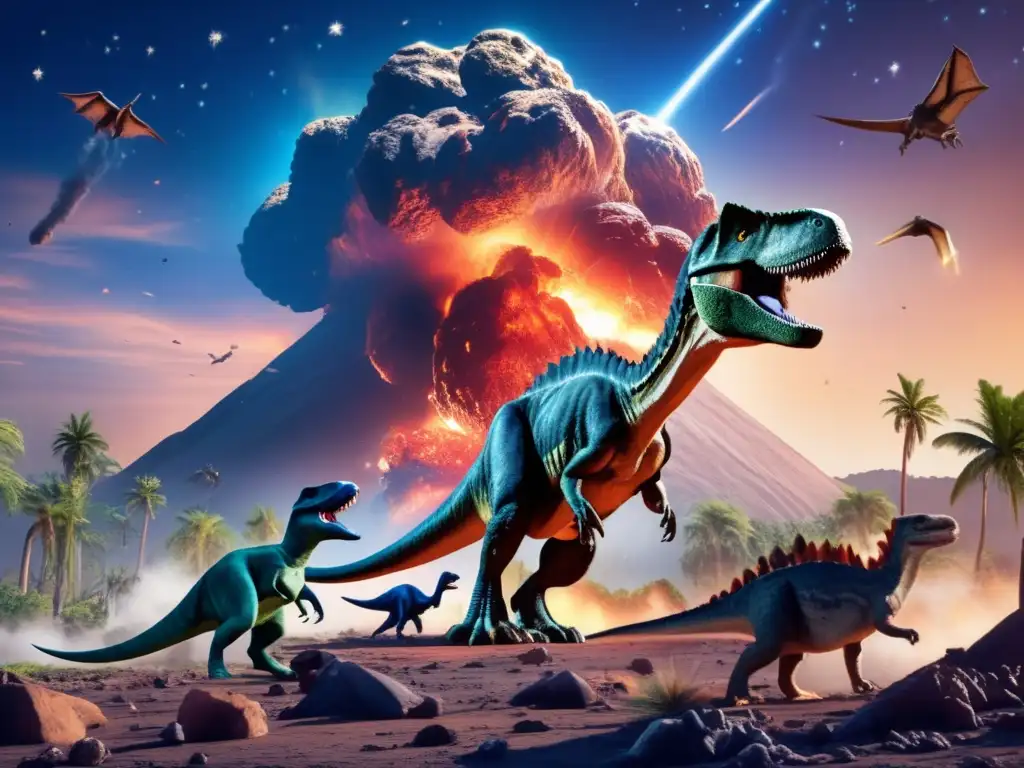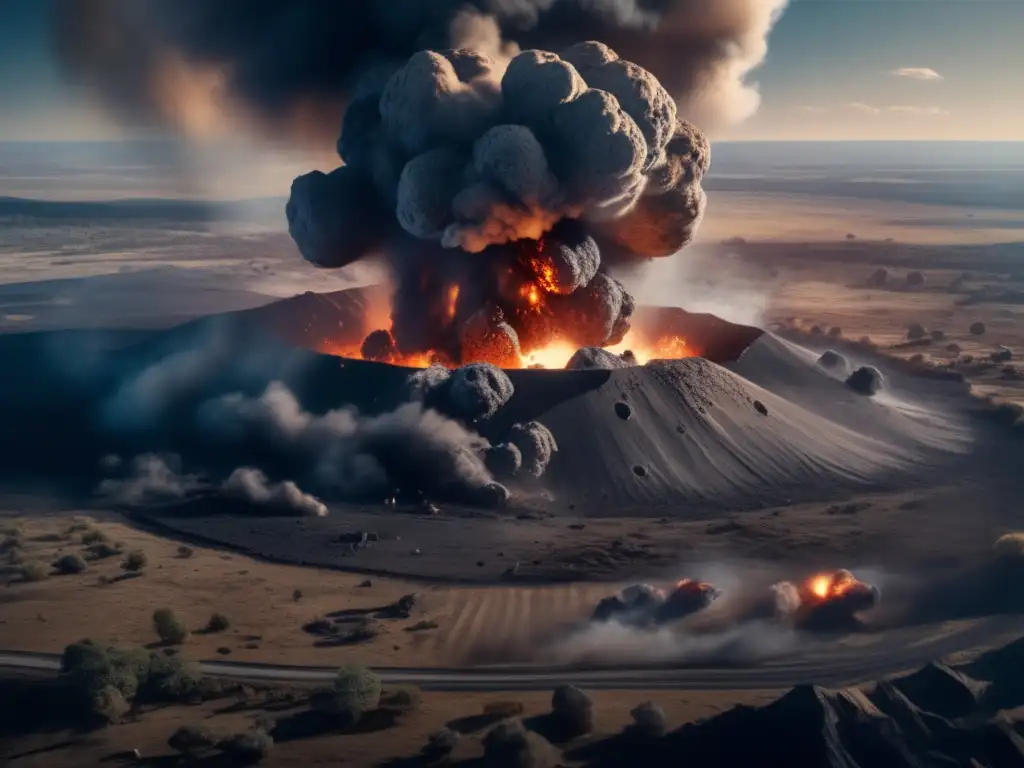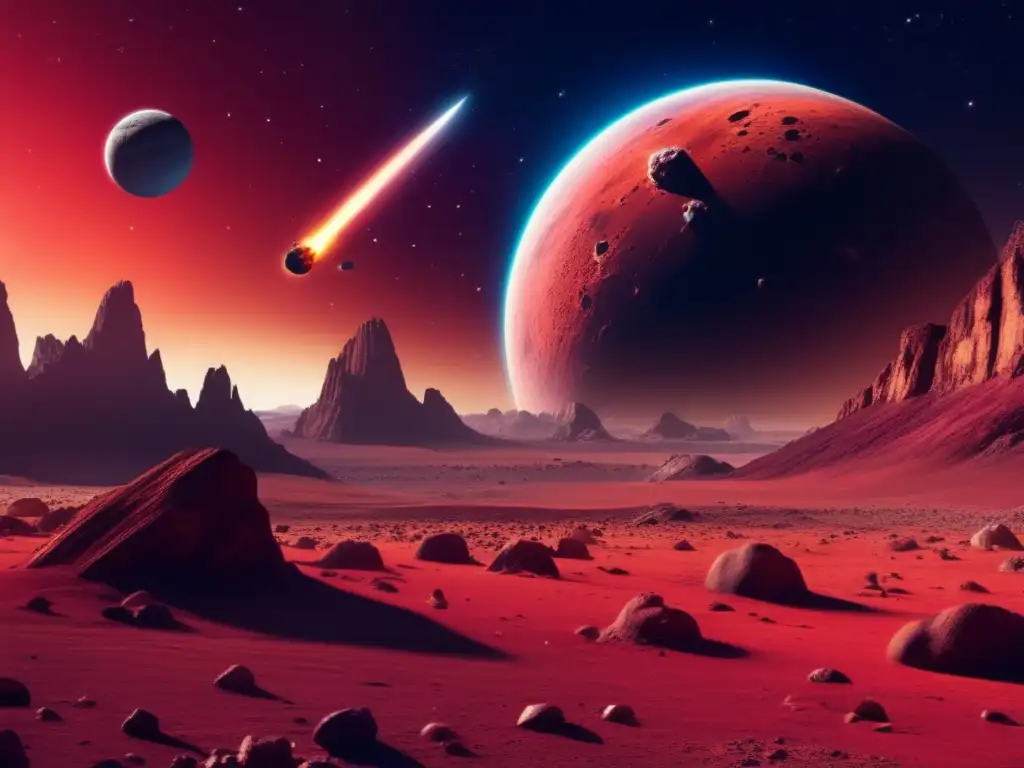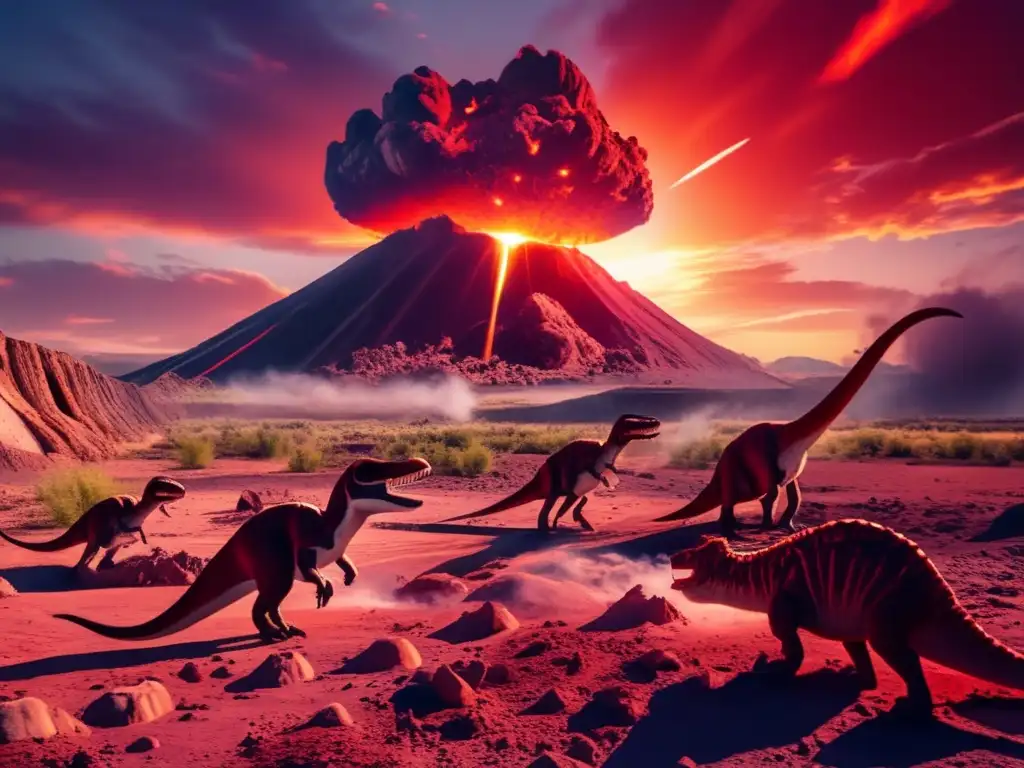When The Heavens Fell: The Asteroid And Dinosaur Extinction Link

Introduction
The extinction of the dinosaurs is a fascinating topic that has puzzled scientists for decades. While for many years it was attributed to volcanic activity, recent research shows that an asteroid impact was likely the cause of their demise. This article will explore the link between the asteroid impact and dinosaur extinction, and how it has shaped our understanding of the evolution of life on Earth.
The Impact

What happened during the impact?
About 66 million years ago, a massive asteroid measuring roughly 10-15 km in diameter struck Earth near what is now the Yucatan Peninsula in Mexico. The impact caused a global disaster, leading to widespread fires, tsunamis, and a "nuclear winter" effect due to the amount of dust thrown into the atmosphere. The impact released energy equivalent to billions of atomic bombs and caused the extinction of nearly three-quarters of plant and animal species on Earth, including the dinosaurs.
How was the asteroid identified?
The impact crater itself was not discovered until the late 20th century, as it had been hidden by sediment and erosion over millions of years. In 1990, geophysicist Alan Hildebrand identified a layer of iridium-rich clay found all over the world that dates back to the time of the extinction. This led to the discovery of the Chicxulub Crater, which measures over 180 km in diameter.
What evidence supports the link between the impact and extinction?
In addition to the layer of iridium-rich clay, there are other pieces of evidence that indicate a correlation between the asteroid impact and dinosaur extinction. Fossils found in rock layers dating back to the time of the impact show evidence of massive fires, earthquakes, and a sudden change in the Earth's climate. The extinction also occurred at the same time as the asteroid impact, within a margin of error of around 32,000 years.
The Aftermath

What was the impact on the Earth's environment?
The asteroid impact had a profound impact on both the planet's environment and its inhabitants. The dust and debris thrown into the atmosphere blocked out the sun for several years, leading to a "nuclear winter" effect that caused widespread cooling. This, in turn, disrupted food chains and led to widespread extinctions. The impact also caused massive tsunamis, earthquakes, and volcanic eruptions.
How did the impact shape the evolution of life on Earth?
The extinction of the dinosaurs left a power vacuum in the ecosystem that allowed mammals to flourish and eventually evolve into the dominant species on the planet. Without the asteroid impact, it is possible that dinosaurs would still be the dominant species on Earth.
What can we learn from the asteroid impact?
The asteroid impact serves as a reminder that Earth is not immune to catastrophic events, and that we must take steps to protect ourselves from potential threats. It also underscores the importance of studying asteroids and other celestial bodies to better understand their potential impact on our planet.
The Future

Are there any asteroids currently on a collision course with Earth?
While there are no known asteroids currently on a collision course with Earth, there are many potentially hazardous objects that are being closely monitored by scientists. The goal is to identify any potential threats early and take steps to mitigate them before they become a danger to our planet.
What steps are being taken to protect Earth from asteroid impacts?
Several initiatives are underway to better understand and mitigate the threat of asteroid impacts. These include the development of asteroid defense systems, such as the Asteroid Impact Deflection Assessment (AIDA) mission, which aims to study the effectiveness of deflecting an asteroid using a kinetic impactor. There are also efforts to detect and track potentially hazardous asteroids, such as NASA's Near-Earth Object Program.
Frequently Asked Questions

-
Did the asteroid impact only affect the dinosaurs?
No, the asteroid impact caused the extinction of nearly three-quarters of plant and animal species on Earth, including many marine species and several types of birds.
-
What happened to the dinosaurs that survived the initial impact?
It is likely that the surviving dinosaurs faced significant challenges in adapting to the post-impact environment, which would have been drastically different than the one they were used to.
-
What impact did the asteroid have on human evolution?
The asteroid impact occurred long before humans evolved, so it did not have a direct impact on human evolution. However, it did shape the evolution of mammals, which eventually led to the evolution of humans.
-
Could an asteroid impact wipe out all life on Earth?
Potentially, but it is unlikely. While even a small asteroid impact could cause significant damage, it is unlikely to cause the extinction of all life on the planet.
-
What can I do to help protect Earth from asteroid impacts?
You can support efforts to detect and track potentially hazardous asteroids, as well as initiatives to develop asteroid defense systems. You can also educate yourself and others about the threat of asteroid impacts and the steps being taken to mitigate it.
Conclusion
The link between the asteroid impact and dinosaur extinction has provided us with valuable insights into the evolution of life on Earth. It serves as a reminder of the potential threats that our planet faces from the cosmos and underscores the importance of studying asteroids and other celestial bodies. By continuing to monitor and mitigate the threat of asteroid impacts, we can ensure the long-term survival of our planet and its inhabitants.
Thank you for reading this article on Asteroid Realm. We encourage you to share your thoughts in the comments section and to positively interact with our website, whether by subscribing or sharing the article on social networks. Together, we can better understand the fascinating world of asteroids and their impact on our planet.
Additional Resources

- NASA Planetary Defense Coordination Office
- The Planetary Society: Planetary Defense
- UNOOSA: Space Object Register
 The Fireball And The Fossil: A Study Of Asteroids And Dinosaurs
The Fireball And The Fossil: A Study Of Asteroids And Dinosaurs Clues From The Crater: Asteroids And Dinosaur Extinction
Clues From The Crater: Asteroids And Dinosaur Extinction Asteroids: The Killers From The Cosmos That Ended Dinosaurs
Asteroids: The Killers From The Cosmos That Ended DinosaursIf you want to discover more articles similar to When The Heavens Fell: The Asteroid And Dinosaur Extinction Link, you can visit the Asteroids and Dinosaurs category.
Leave a Reply

Articulos relacionados: